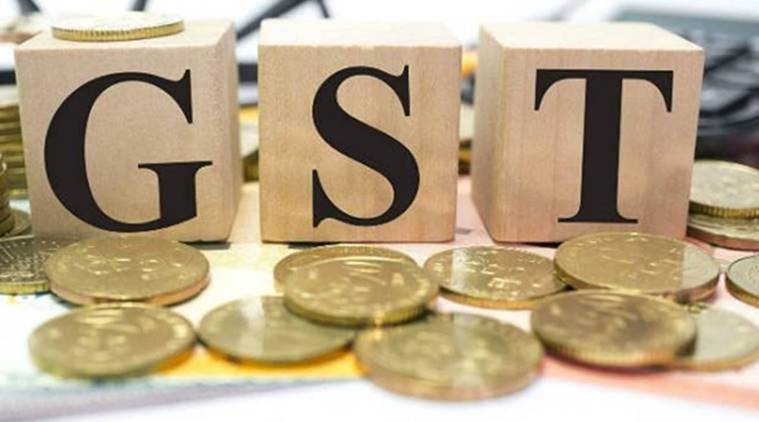- India
- International
GST should remain a destination tax, to support poorer states — not be burdened with multiple objectives
GST was to lead to the unification of the country and improve ease of doing business. These were all significant political slogans. But they have receded to the background in favour of a more muscular nationalism.
 GST collections have risen to a high of Rs 1.13 lakh crore in April. (Representational image)
GST collections have risen to a high of Rs 1.13 lakh crore in April. (Representational image)
GST is not being flaunted by the BJP as its major achievement in the ongoing election campaign. It was launched with a special session of Parliament similar to the one at the dawn of Independence. It was billed as the biggest tax reform. It was to lead to the unification of the country and improve ease of doing business. These were all significant political slogans. But they have receded to the background in favour of a more muscular nationalism.
GST collections have risen to a high of Rs 1.13 lakh crore in April. But on the whole, has it delivered what was expected? Not quite, because the unorganised sectors including the BJP’s base, the small traders and producers, are hurting. And adverse impacts on small producers are being reported from the shoe industry in Agra, brassware industry in Moradabad, pressure cooker industry, etc.
The large and medium-scale producers who are expected to benefit the most from GST are confused since hundreds of changes have been announced from the time it was launched. Even chartered accountants and lawyers who are to help businesses cope with GST are often left befuddled. More and more cases are being filed in courts due to lack of clarity and varying interpretations.
The government has been arguing that the problems are transitional. The government suspended the more difficult parts of the GST provisions — like e-way bill, GSTR2 form — for a while. It has raised the limit for registration under GST from Rs 20 lakh to Rs 40 lakh and for the composition scheme from Rs75 lakh to Rs 1.5 crore to exempt most small businesses. Many tax rates have been brought down. But the problems persist because they are structural and not just a result of poor implementation. Of course, implementation has been poor because difficulties were not anticipated and GST was rushed through. GST needs a structural change but the government is reluctant to admit its mistake.
The opposition parties have raised the issue of the adverse impact of GST on the economy, especially on the unorganised sector. They have promised to bring about a simpler GST.
The proponents of GST believe that the problems are temporary and that structural changes take time to give dividends. They suffer from a confirmation bias. Because they said GST is the biggest reform in India, no matter what the difficulties, they maintain that eventually all will be well. They argue that price rise has been moderated as promised. But that is a result of the deflation in agriculture prices due to slack demand consequent to the decline in the unorganised sectors. Otherwise, all services prices have risen given that the GST rate on them is higher than the service tax that they bore earlier. Since November 2016, the unorganised sector has been hit hard and is declining. But, the official production figures are based only on the organised sector data. So, the growth data given out officially is incorrect.

Proponents quote RBI, IMF and World Bank data to bolster their argument on prices and growth. But none of these agencies collect independent data on these variables. They simply take the government’s figures. So, if the government figures are incorrect so are their figures. Growth rates have declined sharply but that is not captured in the official data.
The arguments for GST are based on the various reports on indirect taxes since the 1970s. The first was the L K Jha Committee report in 1978 and the last one was the Subramaniam Committee Report in 2015. The government website lists the various benefits of GST: It would check black income generation, promote exports, improve tax collection and benefit consumers.
Unfortunately, these arguments are based on partial analysis. Each of the variables is analysed independently and the interconnections with other variables are missed. A macroeconomic analysis substantially changes these results.
For instance, even though the unorganised sector is largely exempt or under the Composition Scheme, it is declining because GST tilts the scales in favour of the large and medium businesses. The poor face price rise even though most of the items of their consumption bear no GST or a low rate. The reason is that the point of levy of an indirect tax is different from the point of its impact. Further, even though GST is a destination tax which should benefit the poorer states, they are losing out. Also, GST has not been able to check the growth of the black economy because it is so complex.
GST has become a very complex tax since the government wanted to serve multiple goals — like check the black economy through invoice matching and keeping petroleum products and alcohol for human consumption out of the tax regime. But if the black economy is not getting checked, inflation is still hurting and growth is down why go for complexity?
The government has been saying that GST is a destination tax so that the citizen buying at the end is paying all the tax. In between, there are many stages of intermediate production, sales, transportation, storage and accounting; each time a tax is paid and given as an input credit to the next stage. So, the tax is calculated dozens of times and then subtracted leading to billions of entries every month creating massive difficulties in implementation of GST. There are other arguments as to why all this is not desirable from the point of efficiency.
Further, the finance minister has stated that 5 per cent of the businesses pay 95 per cent of the tax. So, a last point tax (collected from the dealer or the manufacturer on MRP) with a high enough exemption will simplify GST without loss of revenue and much gain in efficiency.
It should be remembered that the benefit of GST is largely due to computerisation. These two things should not be mixed up. So computerisation and its benefits would continue in the simpler GST. It is not a return to the old system with all its drawbacks. A simplified alternative is possible if the proponents give up their confirmation biases.
This article first appeared in the May 4, 2019 print edition under the title ‘For a simpler GST’. Kumar is Malcolm Adiseshiah Chair Professor, Institute of Social Sciences and author of Ground Scorching Tax
EXPRESS OPINION
More Explained
Apr 25: Latest News
- 01
- 02
- 03
- 04
- 05











































